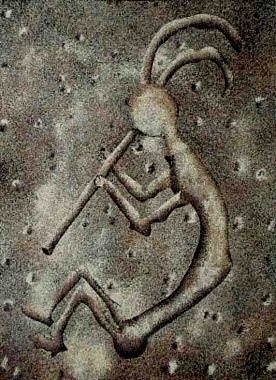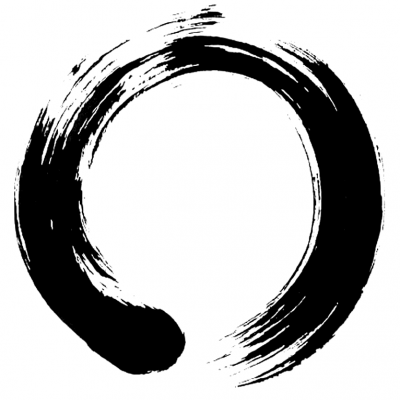Chikudo spirit
My personal approach
on construction of the Shakuhachi
It is a very ancient story when Man got inspired by the wind blowing through bamboos and started to build one of his first musical instrument.

Kokopeli
Prehistoric rock carving
Constructing flutes is a millenary act.
It is also for me a way to keep a strong relation to Nature.
Tuning instruments is a search for harmony.
Taking time and respecting my own rhythm in this society accelerating meaninglessly.
Delighting the senses, as a good flute is a pleasure for the eyes, smell, taste, touch and ear of course.
The original master
The love for Nature guided me to a passion respecting it.
The spirit with which I am moving forward in this path through Shakuhachi making is directly inspired by the plant itself.
The bamboo and its philosophical symbolism came to be rich in teachings for me. I find with that my own spirituality which I try to apply in my work from harvest to finishings.
In the first years, I was thinking I would make my ‘apprenticeship’ with bamboo before switching to ‘nobles’ woods and the wood-turned flutes but as the years passed, I realised how being forced to adapt myself to the material was placing me in a humble position.
Working with natural bore shapes me to accept a long journey building up intuition in relation to the plant.
After a decade, I acquired an experience on which I tended to feel proudly satisfied loosing in that way part of this humility.
Choosing to let all those other flutes behind me for which I was given recognition in order to study sincerely this demanding instrument (in which I was a beginner) led me again on the way of the eternal learner.
In this state of mind, I keep going on my bamboo way.
Utagawa Hiroshige – Taketori Okina – 1852
As the old bamboo cutter from
the Japanese tale of “Taketori monogatari“,
I found, in the hollow bamboo, a treasure.
Ensō (円相) – The circle
Symbol of vacuity in Zen Buddhism
The sound of silence
Attracted from young age by world traditional musics in their diversity, it is lately that I discovered Japanese music. The Shakuhachi of courses was its origin.
Entering the aesthetic of that music – and especially the Honkyoku solo repertoire of the Shakuhachi – compelled me to get rid of my former musical expectations and open to the Zen spirit in the way it magnifies emptiness.
By making flutes, I’ve been giving more and more attention to sound and to what it raises inside us. The Shakuhachi was naturally appealing in this quest.
The Shakuhachi music is not a matter of notes or rhythm. Its essence lies for me in the spaces we incarnate between sounds.
This concept called Ma (間) in the Japanese aesthetic refers to the art of suggesting plenitude in the emptiness separating things.



